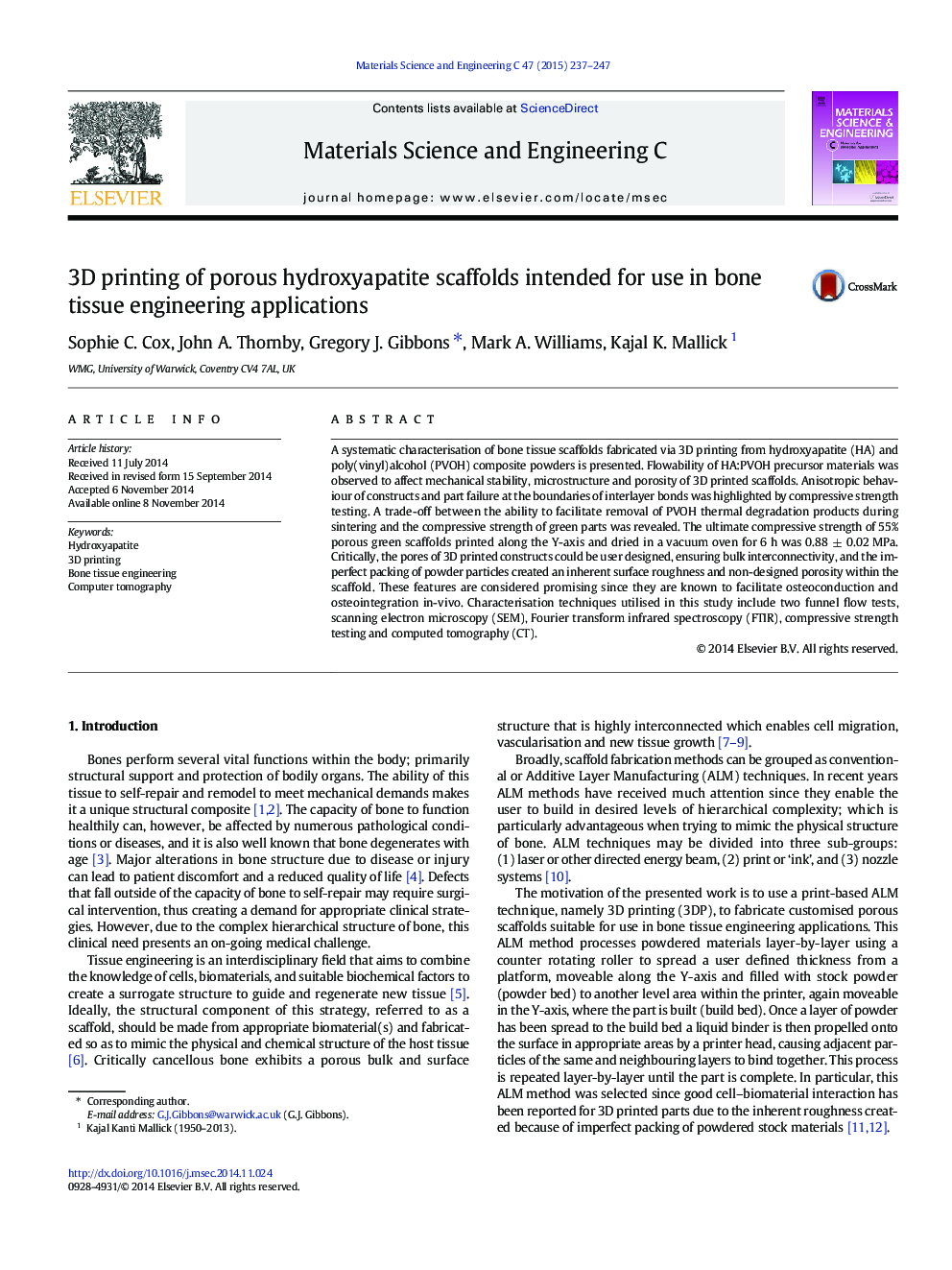| Article ID | Journal | Published Year | Pages | File Type |
|---|---|---|---|---|
| 1428398 | Materials Science and Engineering: C | 2015 | 11 Pages |
•Flowability of HA and PVOH powders corresponded to scaffold printability.•Anisotropic behaviour of 3D printed scaffolds was highlighted by compressive tests.•Maximum compressive strength of 3D printed 55% porous scaffolds was 0.88 MPa.•Imperfect packing of precursors resulted in a rough surface and microporosity.•A CT method was designed and used to quantify designed and non-designed porosity.
A systematic characterisation of bone tissue scaffolds fabricated via 3D printing from hydroxyapatite (HA) and poly(vinyl)alcohol (PVOH) composite powders is presented. Flowability of HA:PVOH precursor materials was observed to affect mechanical stability, microstructure and porosity of 3D printed scaffolds. Anisotropic behaviour of constructs and part failure at the boundaries of interlayer bonds was highlighted by compressive strength testing. A trade-off between the ability to facilitate removal of PVOH thermal degradation products during sintering and the compressive strength of green parts was revealed. The ultimate compressive strength of 55% porous green scaffolds printed along the Y-axis and dried in a vacuum oven for 6 h was 0.88 ± 0.02 MPa. Critically, the pores of 3D printed constructs could be user designed, ensuring bulk interconnectivity, and the imperfect packing of powder particles created an inherent surface roughness and non-designed porosity within the scaffold. These features are considered promising since they are known to facilitate osteoconduction and osteointegration in-vivo. Characterisation techniques utilised in this study include two funnel flow tests, scanning electron microscopy (SEM), Fourier transform infrared spectroscopy (FTIR), compressive strength testing and computed tomography (CT).
